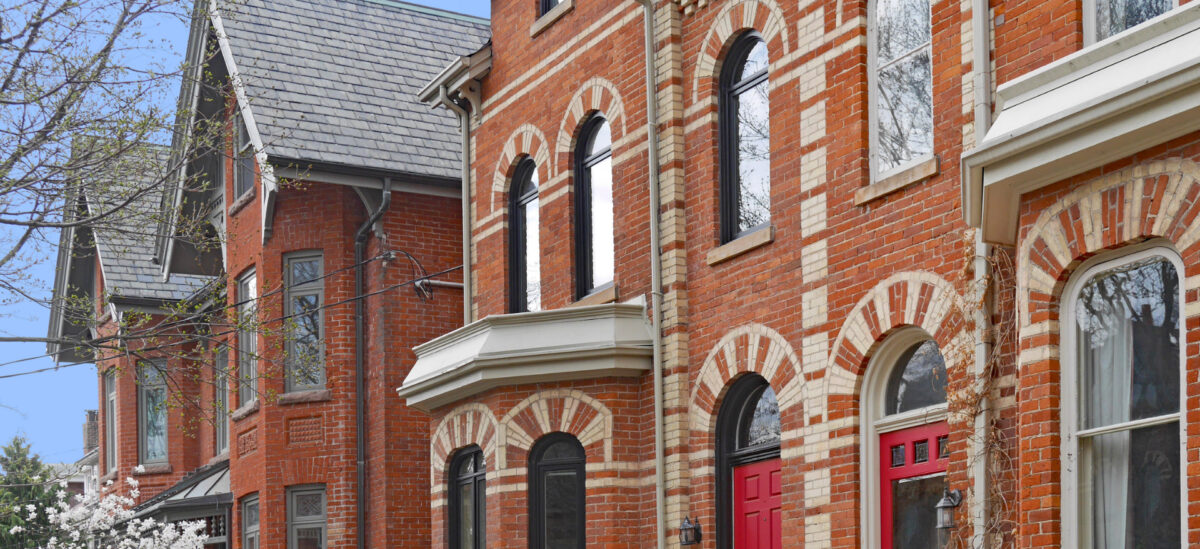Ending homelessness in Ottawa

Ottawa has a housing crisis. Like many municipalities in Canada, we struggle to build enough housing that is affordable to the average family, let alone build enough below-market-rate housing to support those in need.
NIMBYism (Not In My Backyard -ism) is a barrier to building the homes the people of Ottawa need. Many residents speak in favour of density, but object to it in their own community. This is particularly true when a project is rental or marketed as “affordable” as this comes with a fear that property values will drop as “undesirable” people move into a neighbourhood.
Ottawa has a growing need to build homes that moderately increase density. Brigitte Pellerin noted this in the Ottawa Citizen: the cost of suburban housing is higher when we factor in the cost of commuting, gas, the environment and other factors. It costs less for the city to operate and maintain transit systems, sewers, roads and other essential services for urban residents. And, Ottawa has clear evidence that urban taxpayers subsidize suburban and rural property owners. When we complain about the high cost of taxes, we need to need look at the political and planning decisions made on our behalf.
The challenges of building homes are very real. Developers who shoulder the burden of carrying cost, risk, cost increases, application costs and capital, will tend to choose the path of least resistance. Delays, coupled with cost escalations, might mean that they will be out tens of millions of dollars. And poorly thought out political decisions don’t help.
As Alex Bozikovic wrote in the Globe and Mail, we need say Yes In My Backyard.
Communities need a range of housing types. Imagine your neighbourhood only has high end luxury apartments: that means there is nowhere for the employees of the local coffee shop or grocery store to live within the community they serve. The lowest income earners must make more to live near their jobs or live further away and spend less time with their families. That can have implications on children, their education and ability to succeed at school, not to mention their own quality of life.
People need to be able to live with dignity. Moderate density means creating places that are accessible to all, that are visitable and can adapt over time. Darryl Condon, writing in Canadian Architect, hit the nail on the head. Just because someone living in a home doesn’t have accessibility needs today, that doesn’t mean they won’t in the future.
Creating more moderate density helps get people who need housing off the streets. Instead of a revolving door of shelters or spending thousands of dollars a month on motels, we need to create homes for families that forge the community we need to foster. We need family sized, welcoming, affordable homes to help those most vulnerable.
Saying yes to affordable housing doesn’t have to mean a loss of your neighborhood’s character. Communities evolve with time and become something different over years of patient evolution. If they don’t, they stagnate, preserved as a snapshot of something that was and will never be again. Being a YIMBY is the first step in creating the city we aspire to be.
Creative ideas about affordable housing can come from a variety of sources. Key is hiring the right firms, with fresh ideas on both the design and approach to inclusivity.
Our communities thrive when they are diverse; when we see and hear different experiences, cultures, and ideas. Integrating new homes in established communities gives them a vibrancy that can enliven established patterns of use. Well-crafted design integrates, sparks new ideas about living; those designs can enhance the existing places, creating new relationships, bringing new people, jobs and uses to our communities. Well-crafted design considers the community, the pattern of living and transit, the use of parks and community spaces to forge and strengthen our collective sense of identity.
As a city, we can choose to create the city we aspire to be: one that is sustainable, accessible and welcoming to all; we can choose to create vibrant places that enhance our sense of belonging; we can choose to strive for housing that is affordable, sustainable, beautiful and adapts to our changing needs. Every decision we make is a choice on the path to the city we aspire to be.
Time to choose wisely.
Toon Dreessen is president of Ottawa-based Architects DCA and past-president of the Ontario Association of Architects. For a sample of our projects, check out our portfolio here. Follow us @ArchitectsDCA on Twitter, Facebook, LinkedIn and Instagram.